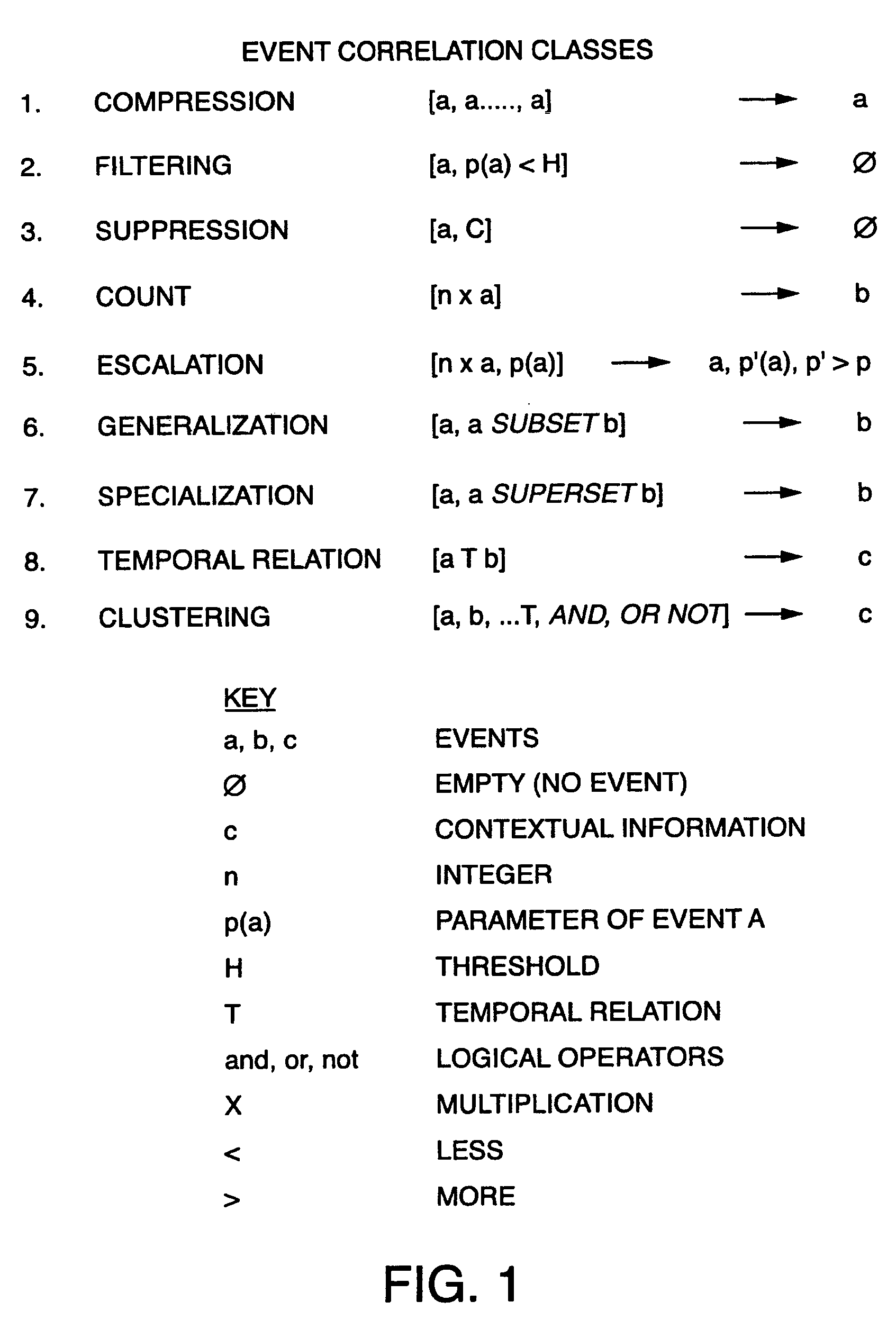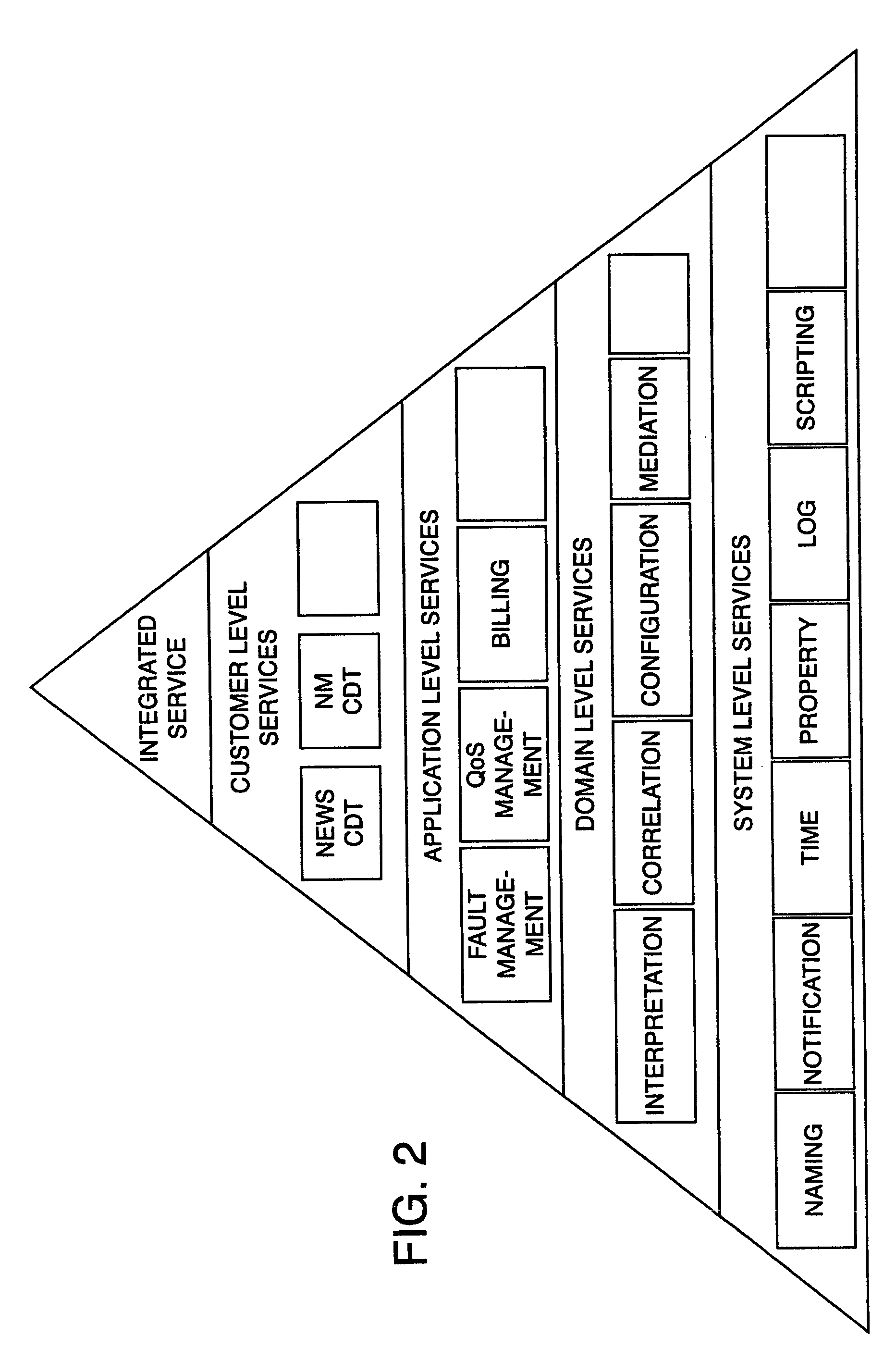System and method for providing a global real-time advanced correlation environment architecture
a global, advanced, correlation environment technology, applied in the direction of multi-programming arrangements, program control, instruments, etc., can solve the problems of alarms being noticed too late, spurious, transient, redundant, network problems, etc., to achieve the effect of convenient replacemen
- Summary
- Abstract
- Description
- Claims
- Application Information
AI Technical Summary
Benefits of technology
Problems solved by technology
Method used
Image
Examples
Embodiment Construction
[0050]In the following detailed description of the preferred embodiment, reference is made to the accompanying drawings that form a part thereof, and in which is shown by way of illustration a specific embodiment in which the invention may be practiced. This embodiment is described in sufficient detail to enable those skilled in the art to practice the invention and it is to be understood that other embodiments may be utilized and that structural changes may be made without departing from the scope of the present invention. The following detailed description is, therefore, riot to be taken in a limited sense.
[0051]A system in accordance with the present invention comprises a message parsing service, a network management service, an event notification service, a network mediation service, and an event correlation service. In operation, the event notification service receives an unparsed message or event from the network mediation service and then passes the message to the message par...
PUM
 Login to View More
Login to View More Abstract
Description
Claims
Application Information
 Login to View More
Login to View More - R&D
- Intellectual Property
- Life Sciences
- Materials
- Tech Scout
- Unparalleled Data Quality
- Higher Quality Content
- 60% Fewer Hallucinations
Browse by: Latest US Patents, China's latest patents, Technical Efficacy Thesaurus, Application Domain, Technology Topic, Popular Technical Reports.
© 2025 PatSnap. All rights reserved.Legal|Privacy policy|Modern Slavery Act Transparency Statement|Sitemap|About US| Contact US: help@patsnap.com



